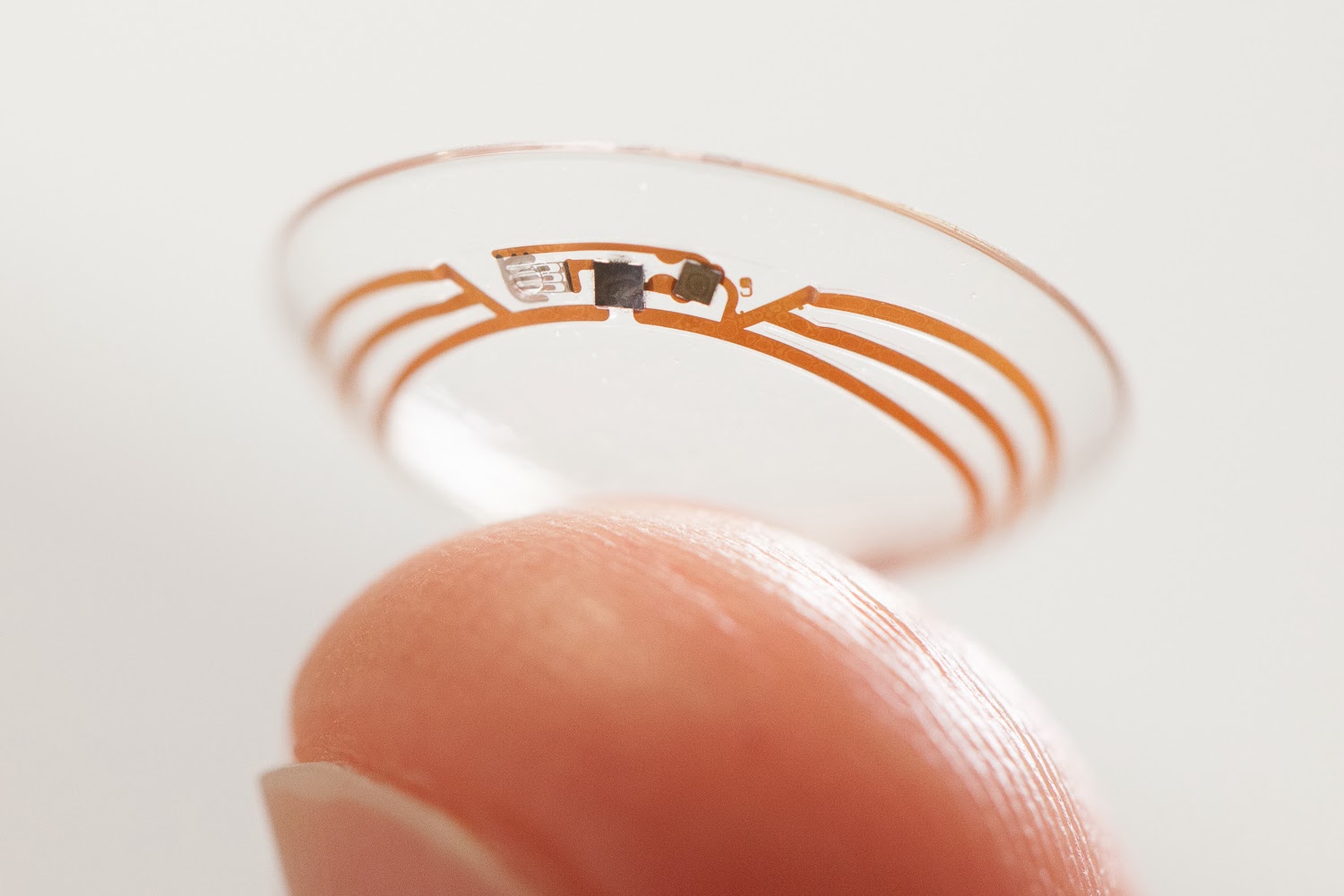Smart contact lens for diabetics? What’s next for digital healthcare
22 Jan, 14 | by BMJ
Diabetics could soon avoid pinprick blood tests using a smart contact lens that measures glucose in tears. A prototype shown off by Google (with a little help from Microsoft) uses an embedded miniaturised glucose sensor and wireless chip to measure glucose levels as often as once every second.
“We’re also investigating the potential for this to serve as an early warning for the wearer, so we’re exploring integrating tiny LED lights that could light up to indicate that glucose levels have crossed above or below certain thresholds.”

Unsurprisingly, Google is not the only company investing in the fast growing area of ‘digital healthcare’. The Consumer Electronics Show (CES 2014) earlier this month, saw a shift away from the event’s typical focus on everyday consumer electronics, to other growth markets such as medical technology, health products and applications. In fact, there was an entire sub-section of the show dedicated to digital health, made up of over 300 exhibitors (a 40% increase from last year).
Wearable technology for fitness
Currently, the most popular types of wearable technology are gadgets like the FitBit and FuelBand. This type of device helps users track and monitor fitness levels, sleep patterns and calorie intake. They encourage individuals to take an active role in improving their overall health and make the process fun by providing goals, challenges, and social interactions. The next stage of product design is thought to be more discreet and fashionable. Future models may well be embedded directly into clothing or everyday products such as helmets, utensils and walking sticks.
Sensors in wearable technology devices are also predicted to become more sophisticated to capture a wider range of biometric data. They will soon be able to sense skin temperature, food consumption, and the context in which activities are carried out.
Advanced monitoring and diagnosis
Some wearable technology is already advanced enough to send data about organ function and disease markers straight to physicians. This gives them access to in-depth information when monitoring a chronic disease or making a diagnosis.
Ingestion Event Markers (IEMs) are consumed with medication to gather and transmit information from within a patient’s body. This is thought to improve patient commitment to treatment by putting the data right at their fingertips. For example, the Freescale KL02 chip can be swallowed with medication or embedded directly into a diseased organ. The chip sends biometric readings back to the patient or healthcare professional via Wi-Fi.
Intel also recently announced its Edison release, a computer the size of an SD card. To demonstrate the power of the Edison, the company developed Nursery 2.0, which included “a toy frog that reports an infant’s vitals to a parent via an LED coffee cup, and a milk warmer that starts heating when another connected item (the frog, again) hears the baby cry”.
Medical education
Surgeons wearing Google Glass can give other physicians and medical students the perfect point of view during surgical and medical procedures, and the wearable computer has already been implemented in training.
Towards the end of 2013, a surgical team at the University of Alabama at Birmingham used VIPAAR (virtual interactive presence in augmented reality) technology in conjunction with Google Glass during surgery. By merging these technologies, surgeons could interact and see both sets of hands in the surgical field. This type of ‘telemedicine’ grants practised surgeons the opportunity to provide valuable expertise remotely to less-experienced surgeons.
Advances in digital health may well transform how doctors and patients share information, interact, and make decisions. Wearable technology could give patients greater access to data about their own bodies, encouraging greater involvement in their overall health and well-being.
Many believe that this shift in patient involvement could lead to fewer medical tests, shorter and less frequent consultations, and higher treatment success rates. In addition, many of these new developments will help doctors study, consult, and pass on knowledge more effectively.
These innovations have the potential to bring a variety of positive changes to the healthcare industry, and the best is yet to come.